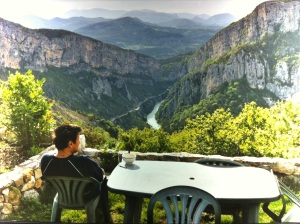Every year, comes September, Apple presents a new iteration of the iPhone, and every year, the iPhone gets better at taking pictures. One year, the iPhone gets better with low light shots, another year with portraits. Last year it started emulating the low depth of field and bokeh you normally get with a few high end lenses. This year, it will be about studio lighting. And every year, in the forums dedicated to digital photography (or should I say – to the cult of digital cameras), purists and fanatics develop new arguments to explain that “a photo shot with an iPhone is not the same, it’s looks artificial, you can see the difference”.

Maybe. To the trained eye of a specialist. But for the majority of people, the pictures they get from their phones are much better than what they used to get from a point and shoot camera 10 years ago. Incredibly better than the prints they used to receive when they were shooting film. And now they can share them. Without having to be an expert.
Smartphones ARE the go-to digital camera of billions of people
- We always have them with us,
- Taking pictures with them is simple and intuitive
- With their large, high resolution screens and easy to use interface, they’re a great platform to edit and enhance pictures,
- The integration with email, messaging and all sorts of social network apps is seamless. And the images are backed up automatically (in a cloud) and made available in cloud based galleries.
- did I mention selfies?
And they’re getting better every year – integrating better sensors, better lenses, adding optical image stabilization, adding a short tele lens, and using software emulation to let billions of people take pictures which used to require expensive hardware and a solid photographic knowledge (portraits with low depth of field and pleasant blurry backgrounds, studio lighting).


As a result, smartphones are more than good enough for casual family photography or casual travel photography, and many news organizations have equipped their reporters with smartphones. In any case, the pictures will be primarily seen on screens (smartphones, tablets, laptops, TV), and on this type of support, the quality of the images (resolution, contrast, dynamic) is more than adequate.
Of course, smartphones are missing a few things:
- No viewfinder (an issue when shooting outdoors on a very sunny day or with long tele lenses)
- No ultra-wide angle lens (can’t emulate that)
- No medium to long tele lens: the tele objective of an iPhone has a focal length equivalent to 56mm – even with the “digital zoom” (aka cropping) you can’t get beyond the equivalent of a 200mm lens, and with a reduced resolution.
- No macro lens
- No fine control of the exposure or the focus (you can put your finger on the screen to indicate where you want the phone to set the exposure or the focus, but that’s still pretty limited)
- No way to control multiple flash guns or studio lights
- And of course, they don’t have a 50 Megapixel full frame sensor.

Where does it leave us?
- Amateurs, families, people traveling light and all sorts of professionals needing good quality photographs will be happy with a smartphone
- Soccer moms, enthusiasts, who need a longer reach and more control over the picture will use a bridge camera (such as a Sony RX10, Panasonic FZ1000), a mirrorless camera with an electronic viewfinder or a dSLR.
Provided they have the skills and have bought a few good lenses (in any case something better than the trans-standard zoom usually coming with the camera) – they may sometimes get better results than with a phone. It’s a bit provocative, but I would argue that a photographer of average abilities using an entry level mirrorless camera – with no electronic viewfinder and no flash shoe, paired with a 18-55 (or 16-50) kit zoom – is probably worse off than the user of a smartphone in most situations.

What about film?
- So far, digital photography has been about ease of use, convenience, and speed.
- Film could not fight in the same category. Film photography requires more technical knowledge, it’s a cumbersome process, and it’s slow. Today, you shoot with film by choice, because you love the old film cameras, because you love having a piece of film in your hands, because you love the technical challenge, because you love the way images taken with film will look.
- To some extent, conventional digital cameras are following their film predecessors, and have started leaving the mass market. They’re already in a niche, still large, but shrinking. Five or ten years from now, as the smartphones will have kept improving, the niche will be much smaller, inhabited by photographers who love to be in control of the technical characteristics of their images, and refuse to be deprived of that control by a smartphone.
- Admittedly, film photography is an even smaller niche. But I don’t see it shrinking anymore. As smartphones become better at delivering pictures automatically, as digital cameras become the domain of perfectionists, a minority will look at film photography as the ultimate refuge for spontaneity and authenticity.















